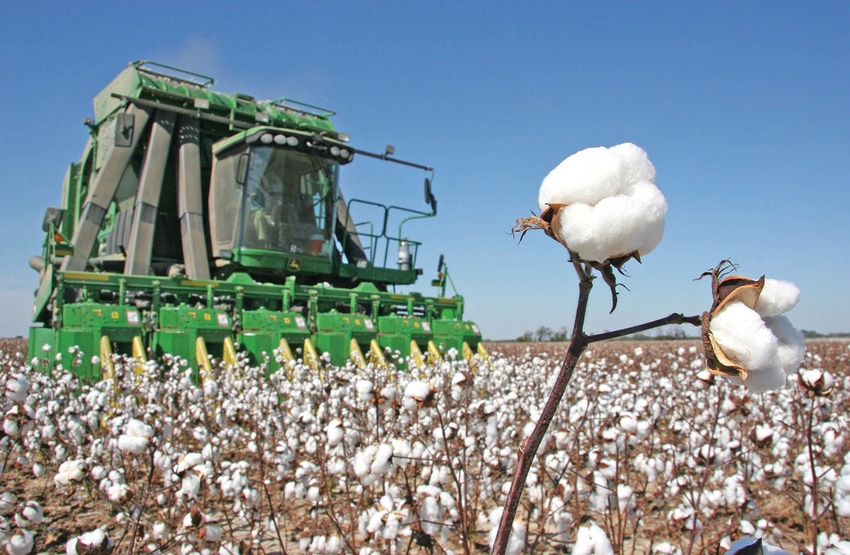
Mid-South farmers have had an unusual opportunity this fall — a market rally at harvest time.
Corn, soybeans, even cotton to a degree, have seen some market strength, a response to “robust export sales,” according to Louisiana State University Ag Center agricultural economist Michael Deliberto, Baton Rouge.
Watching that market through the end of the year and into 2021 will be crucial, Deliberto says, as several factors could affect commodity prices.
“The harvesttime market rally shows promising pricing opportunities for corn, soybeans, and cotton late into the calendar year,” he says. “A market rally at harvest is unusual.”
Export is catalyst
A continuing rally will depend on several factors, mainly ongoing export sales, but also weather in South America and crop conditions in other exporting countries, such as Brazil.
“Exports to China helped soybeans and corn,” Deliberto says. “Recently, news from China suggests that the Asian nation could increase its import quotas for corn.”
He adds that the once deemed ‘burdensome’ U.S. soybean stocks are moving down to manageable levels by marketing year’s end, too. “For the last few years, soybean ending stocks were burdensome. The pipeline was full of soy, likely the result of expanded acreage and good yields, coupled with trade tensions that curtailed soybean exports. The result was a rise in ending stocks carrying into the next marketing year.”
China is now buying U.S. soybeans. “China switched from Brazil, and started buying from the U.S., so, we are starting to see the needle moving to a positive position for soy exports. Marketers will look to see if that price strength can survive.”
2021 outlook
Will improved markets affect producers crop mix decision for 2021 planting?
“Recent increases in soybean prices will compete with cotton acres in Louisiana,” Deliberto says. “Corn and soy price in the near-term will remain a challenge for cotton acres to increase, especially with a price in the sub-70 cent range.
“Soybean acreage has potential to increase in Louisiana, although Louisiana producers have been planting more than 1 million acres of soybean for the last few years.”
Established rotation will play a role in acreage decisions. “Most producers will stay with rotation plans. It will be hard for cotton to ‘buy acres’ away from corn and soybeans given where prices are now.”
But it’s possible, depending on several factors. “Some in the trade suspect that the USDA has overestimated the cotton crop. Weather impacts stemming from the recent hurricanes in the Mid-South and crop conditions in Texas could remove some production. If this is the case, it may take a month or so for the balance sheet to adjust. “Producers could reassess cotton acreage if prices push above that 70-cent level.”
For now, the corn versus cotton ratio has come down a bit, but still favors corn. Also, soybeans remain favored over cotton, but cotton is closing the gap, Deliberto says. “Futures price ratios reflect the December corn, November soybean, and December cotton contracts for 2021. This measure can be used to measure the relative profitability of competing crops. It is sometimes an early indicator of where acreage may sit ahead of planting.”
He adds that cotton is a good crop for Louisiana. “I’d like to see cotton acreage increase in the state, but we would need to see a substantial improvement for many new acres. Given current prices and memories of the recent Hurricane season in Louisiana, I’m not expecting a massive acreage shift to cotton.”
He sees other factors that could affect markets moving into 2021. Corn, like soybeans, could benefit from increased exports, but the U.S. does not export as much corn.
“The strength of corn is tied to ethanol,” Deliberto says. That advantage can weaken with pandemic-reduced travel. “A new Covid-19 spike and governmental travel restrictions would limit economic growth here and in other countries,” he says. “Fear moves from the financial sector to commodities and the corn market is perhaps more exposed to the overall economy (e.g. oil, transportation). How fast the U.S. and global economies recover will be key.”
2020 crop figures
Final numbers from the 2020 crop also might affect markets moving into 2021. That could be especially important for cotton. “It could be December before we know the size and quality of the U.S. cotton crop.
“There is some agreement among traders that the market may have already priced-in a smaller crop,” Deliberto says. “Reduced U.S. cotton production (weather-related), strong export sales, and the expectation that sales could increase could collectively prove to be the momentum the market needs. We will have to wait for the official USDA numbers.”
He says multiple hurricanes that hit the Mid-South will affect cotton’s final numbers. Those storms affected yield and quality.
Bolls open when the hurricanes came through will likely suffer quality loss. “Quality decline will affect price and export buying,” Deliberto says. “Some higher quality cotton will come off the export market,” he adds, “but the market for lower quality cotton could improve as cost conscious buyers look for bargains.”
Drought issues in the Southwest also will affect final cotton numbers.
The current market shows promise, Deliberto says, and offers producers some interesting options as they plan for 2021 acreage, crop mixes and expenditures.
Factors to consider
He cites four factors to watch.
Market prices are one component, and volatility could be an issue going into planting season.
He says producers should consider pre-booking inputs such as fuel, fertilizer, and seed.
Consider machinery replacement. “Is now the time to reinvest? Consider reduced cost and the timeliness factor of machinery reliability. Breakdowns affect planting and might result in yield drag with delays. Expanding acreage to one commodity also might dictate investing in larger, more expensive equipment.”
Leasing vs buying. “Is it better to lease based on cash flow positions? Producers have a lot of options to consider. Work with lenders and dealerships to see if leasing could reduce some fixed costs.”
Change and flux play roles in any new planting season, Deliberto says. This year might be even more volatile, considering it’s an election year and a pandemic continues to threaten health and economic activity across the globe.
He says election results could result in money moving around in the futures market, possibly creating some market volatility.
“A bigger effect could be a spike in Covid 19 cases. If the pandemic further restricts the economy, it will affect the market more than the presidential election. The stock market will ignore some issues of the election.”
Follow a plan
He says caution is a wise position for now but encourages producers to look at factors that could affect 2021 decisions. For big investments — capital expenditures such as replacing equipment or expanding acreage — producers might consider holding back until the economic picture is clearer or they might decide to replace aging equipment or add acreage now.
“It’s a farm-by-farm decision,” Deliberto says. “Producers who have put themselves in position to invest in machinery or capital outlays might want to add more aces to justify investing in better equipment.
“Another option is to consider on-farm storage, especially with current price rallies. Consider the cost to carry. Look at the fixed costs of adding acreage or storage. How can you fit storage into a market plan? On-farm storage may be a better option than gobbling up more acres.”
The crux of 2021 decision-making, Deliberto says, must focus on developing and following a sound business plan.
“It is key,” Deliberto says. “Price rallies provide opportunities. But producers must revisit their marketing plans throughout the season. Know the cost of production; know what price you need; consider fixed costs and family living expenses and determine the price needed to reach market targets throughout the marketing year.”
About the Author(s)
You May Also Like






